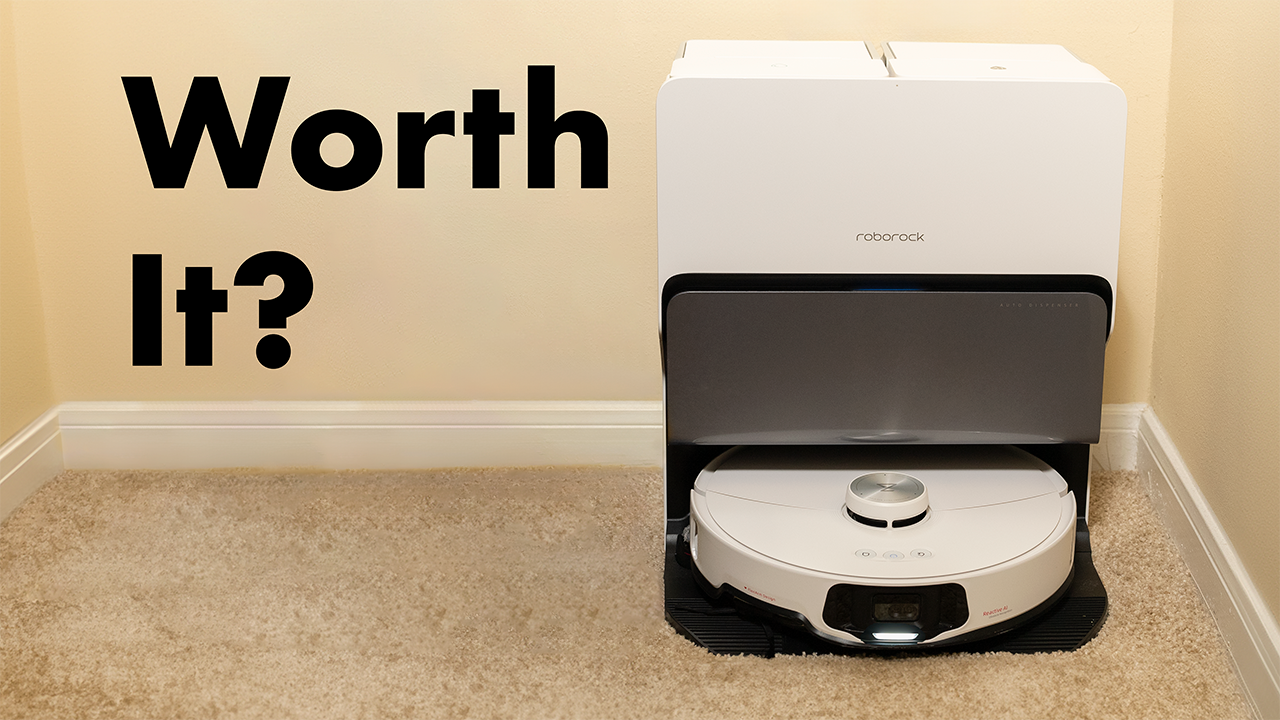Product Links:

Sonos Era 300 (Affiliate Link)

Sonos Era 100 (Affiliate Link)

Sonos Move Gen 2 (Affiliate Link)
Sonos Era 300 after 6 Months – Worth it for Dolby Atmos?
It’s been six months since I bought a Sonos Era 300, and I’ve never heard anything quite like it. It has the ability to recreate music like you’re listening to it live.
For example, when I returned from my trip to see the legendary composer John Williams conduct the Boston Pops, I could kick back, relax, and listen to his music on this speaker, feeling like I had never left the performance.
Incredible Sound Quality
But it’s not just orchestral music. This speaker sounds incredible with music from tons of different artists. Another really good example is “The Middle” by Rhys Lewis. The vocals in this track are so forward that it sounds like Rhys is singing right in front of you. And if there’s enough room behind it, the Era 300 can make it sound like there’s a piano several feet behind the speaker.
Dolby Atmos Technology
But why can this speaker place instruments and vocals so precisely? There are two reasons.
The first is that this speaker supports Dolby Atmos music. Dolby Atmos is a newer music format developed within the past decade. Unlike the stereo format, where you have a right and left channel, Dolby Atmos is an object-based audio format that allows sound mixers and engineers to digitally place different parts of a music track around a virtual room during the mixing process. This causes you, as a listener, to notice different things, like instrumentation or vocal effects, more in the Atmos mix than in the stereo version.
You’ll also notice that Atmos tracks are typically not as loud as their stereo counterparts. That’s because Dolby Atmos requires mixes to be at -8 LUFS, so they’ll sound about 10 dB quieter than their stereo counterparts. This actually gives Atmos tracks more headroom, which is why Atmos tracks often have better dynamic range than their stereo counterparts. That’s also due to an increasing trend with stereo mixes to be mixed as loud as possible.
Not all Atmos mixes sound good, though. Early versions of Atmos music tend to drown out vocals with instrumentation. Tracks like “Wonder” by Shawn Mendes, “About Damn Time” by Lizzo, and “I Think He Knows” by Taylor Swift all fall victim to this. But then you have Atmos tracks like the ones I talked about earlier that sound really good with this speaker.
Speaker Design
So why does music sound so good with the Era 300? Well, that brings me to the second reason: its design. The Sonos Era 300 was built from the ground up for spatial audio. It houses one forward-firing tweeter meant for vocals and lead instruments, a left and right tweeter, a left and right woofer, and then an upward-firing tweeter that reflects sound off your ceiling. The speaker also features custom waveguides to help further position different parts of a music track in your space.
Overall, the sound is excellent. It has a nice warmth, deep bass, and clear highs and mids.
Dolby Atmos for TV
Now, if Dolby Atmos sounds familiar, it’s probably for the other thing it’s famous for, which is TV shows and movies. And yes, you can use a pair of Sonos Era 300s as rears with a Sonos soundbar for an Atmos setup, but you cannot use a pair of them as front speakers with your TV.
Speaker Placement
Speaker placement is another important consideration with the Era 300. You’ll need to make sure you give it enough room to place sound around a room. It’ll sound best on a table in the center of a room. In my experience, when you do this, you’ll get an immersive experience with clear vocals, deep bass, and a pretty unique experience with that height channel.
Controls and Features
Other highlights include its new speaker controls, which now give you this nice indented volume bar, plus an area for play/pause, skip forward/back, and a voice assistant button. There’s also a physical mic mute switch on this speaker, which will physically disconnect the mic from power if you don’t care about the voice features.
Speaking of voice features, like the Era 100 and the Sonos Move Gen 2 (we have videos on both speakers now), the Era 300 also does not have the Google Assistant; it only supports the Amazon Assistant and Sonos voice control. Overall, they work quite well on this speaker and respond quickly. But not having the Google Assistant is definitely a downgrade over the previous Sonos experience.
Sonos App and Features
Another Sonos feature I love is the grouping feature. If you have another Sonos speaker or group playing music, hold the play/pause button on the Era 300 and it’ll play the same music as the other speakers in your system.
Another highlight of the experience with this speaker is the Sonos app. You’ll get features like True Play tuning, which is what you’ll use to optimize your speaker sound. For iOS users, you have your traditional True Play tuning, which is now called Advanced, or the new Quick Tuning feature, which uses the onboard mics to quickly tune the speaker. And Android users, for the first time, will actually see True Play in their Sonos app, but they’ll only have access to the Quick Tune option in the Sonos system settings.
You can also pair the Era 300 (or a pair of them) with a Sonos Sub and adjust the intensity of that upward-firing speaker with the Height Audio setting. Lastly, unlike other speakers like the HomePod Gen 2, you get an EQ (speaking of which, the Era 300 blows it out of the water for spatial audio).
Connectivity Options
Another great part of this speaker’s design is that it supports line-in via a USB-C dongle that Sonos sells. You can adjust the latency in the Sonos app to make it barely noticeable, making it perfect for a wide variety of applications, like plugging it into your turntable. If you do that, you can actually play the music coming from your record player across your entire Sonos system wirelessly, which is pretty cool.
The speaker also supports Bluetooth, which is nice to see, though Dolby Atmos music isn’t supported over Bluetooth with any speaker when recording.
Easy Setup
The last thing I’ve enjoyed about owning this speaker is how easy it was to set up. The setup was fast, only took a few minutes, and even faster if you already have Sonos devices.
Downsides
Now let’s talk about some of the downsides I’ve encountered with this speaker, and there are quite a few.
The first one is if you play just regular stereo tracks on the Era 300, they don’t sound as good as the Atmos tracks. Sound is projected out of the speaker’s sides more with non-Atmos tracks, and not as out the front, which is more of what you want with stereo tracks and what you get with other Sonos speakers like the Era 100 (which we’ve also reviewed).
Not every music streaming service supports Dolby Atmos yet, as I pointed out in my music streaming comparison videos for 2023 (link in the description below if you’re interested). YouTube Music and Spotify don’t support Dolby Atmos. Amazon Music Unlimited and Apple Music are the services you can use with the Era 300 that support Dolby Atmos at the time of review.
Related to Atmos, another downside with this speaker is that to play Atmos music on it, you must use the Sonos app. Atmos cannot be AirPlayed from Apple devices to the Sonos Era 300, which would be way more convenient. Because sometimes I’ve encountered a few errors every once in a while, I’m hoping Sonos will at least be able to give us some sort of lock screen interactive widget like they have on Android, which I use on my Pixel tablet all the time.
Speaking of Pixel tablets and Android, unfortunately, if you’re an Android user, Sonos still treats you as a second-class user with its refusal to support Google Cast on its products.
Another downside I’ve encountered is when you listen to music on another Sonos speaker (like my Sonos Roam, for example) and bring the Roam to the Era 300 for the music transfer feature, the music will transfer and start playing on the Era 300, but it will then stop for several seconds. It stops for so long that I would often just walk over to the speaker and tap that play button again. But if you give it 10 seconds or so, it’ll start playing again, but play the Atmos version of the music you transferred.
The last downside, and it’s a potential downside because I personally haven’t encountered it yet. Still, Sonos did confirm it, is that when you use the Sonos Era 300s as rears for a Dolby Atmos setup, the center tweeter on the 300s is actually turned off for more sound separation. This might disappoint some who are swapping out Sonos Ones.
Recommendation
Overall, this speaker has a ton of potential, but it still feels like Sonos and the other companies in the industry need to fill in the rest of the gaps before Atmos can really take off. But don’t take that as me saying I don’t recommend this speaker. I do. I’ve been so transfixed by this speaker and the listening experience you get with it. For me, it has absolutely been worth the $449 Sonos charges for it. It is by far the best audio equipment for listening to Atmos tracks that I have used.
So now let’s discuss what situations I recommend using the Era 300s in and how many I recommend you buy.
For music listening in small to medium-sized rooms, I think most people will be fine with just one Era 300 because it projects sound around a room so well. You don’t necessarily need to purchase two like you often would with other speakers like the Era 100.
For larger rooms where you have a lot of space to cover, I’d look at buying two and stereo pairing them together. Because I haven’t personally used a set of these as rears for an Atmos TV setup, I can’t give you a recommendation for that use case.
Now, if most of the music you’re planning to listen to is in stereo and not Atmos, in most cases I’d probably go for the Era 100s instead. The Era 300 isn’t designed to be a directional speaker like the Era 100s, which stereo tracks really benefit from. To learn more about those speakers, check out the full six-month-long review I did of them:



